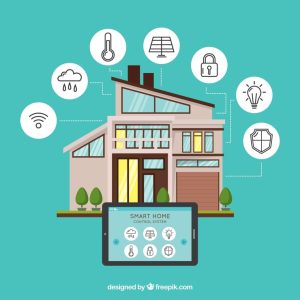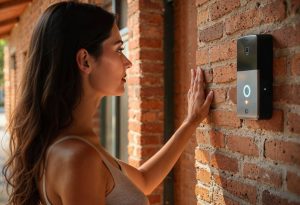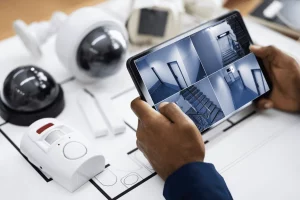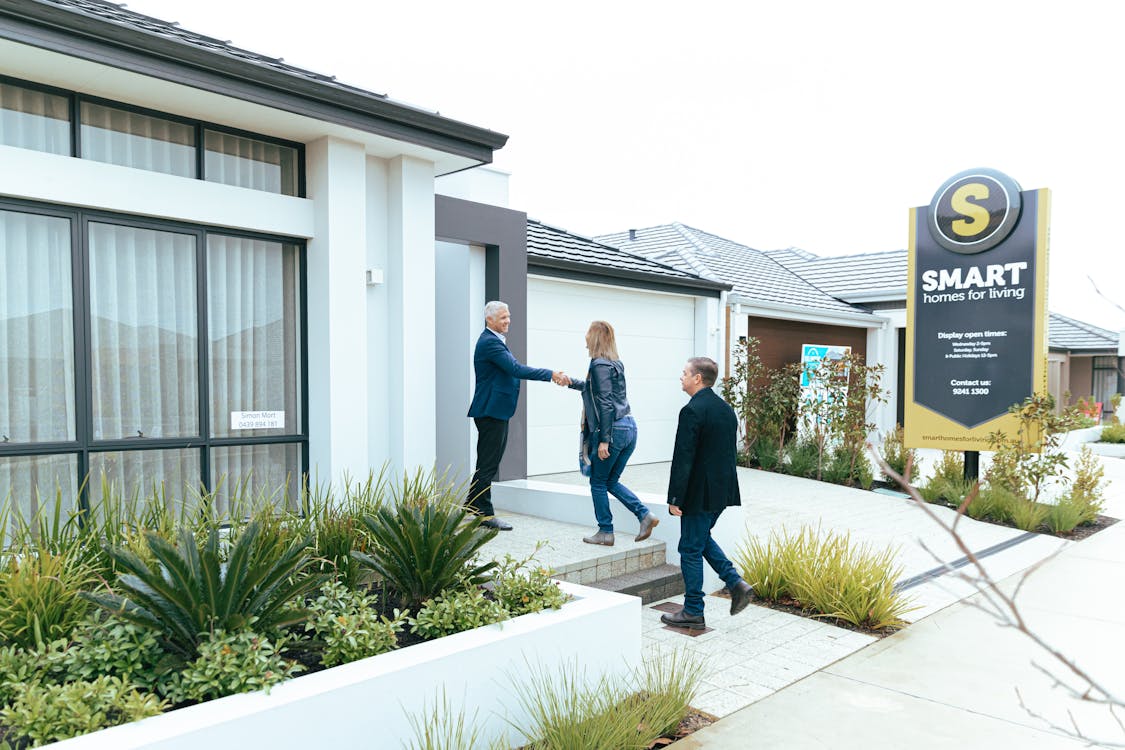As technology advances, the concept of smart homes is becoming increasingly popular, revolutionizing the way we interact with our living spaces. The Internet of Things (IoT) is at the forefront of this transformation, enabling seamless connectivity, automation, and efficiency. From remote-controlled lighting to energy-saving thermostats, IoT integration in smart homes is reshaping how people live, work, and interact with their surroundings.
What is IoT in Smart Homes?

IoT, or the Internet of Things, refers to a network of physical devices connected via the internet, collecting and sharing data to enhance user experiences. In smart homes, IoT devices enable homeowners to control and monitor household functions remotely through smartphones or voice commands. The technology connects devices like security systems, thermostats, appliances, and lights, allowing them to “communicate” and perform tasks autonomously based on predefined conditions.
Benefits of IoT in Smart Homes
IoT technology offers numerous advantages to homeowners, from enhancing convenience to improving energy efficiency. Here are the key benefits:
Enhanced Security and Safety
-
- IoT-enabled security systems allow homeowners to monitor and control home security remotely. Smart cameras, motion sensors, and locks can be managed via mobile apps, ensuring real-time updates and alerts. For example, if a security breach is detected, users receive instant notifications, enabling them to take quick action.
Energy Efficiency and Cost Savings
-
- IoT smart home systems can significantly reduce energy consumption. Devices like smart thermostats, lighting systems, and appliances adjust energy usage based on occupancy and preferences. This saves on utility bills and reduces environmental impact by minimizing unnecessary energy use.
Convenience and Control
-
- IoT simplifies daily routines by automating tasks. Users can schedule activities, like adjusting lighting or playing music, creating a more convenient and personalized environment. The ability to control home functions remotely adds convenience for busy lifestyles, allowing adjustments to be made on the go.
Health and Well-being
-
- IoT-powered devices can improve indoor air quality and monitor factors such as humidity, temperature, and carbon monoxide levels. Smart air purifiers and thermostats ensure that indoor conditions remain optimal, promoting better health and well-being for residents.
Customization and Flexibility
-
- IoT allows users to tailor smart home functions to their preferences. Lighting, temperature, and even appliance settings can be customized, creating an environment that suits each individual’s lifestyle. This adaptability makes IoT an attractive option for diverse household needs.
Improved Accessibility for Seniors and Individuals with Disabilities
-
- Smart home technologies improve accessibility by automating functions for individuals with limited mobility. Voice-controlled devices and automated lighting make everyday tasks more manageable, promoting independence and comfort within the home.
Case Studies and Examples of IoT in Smart Homes
1.Nest Thermostat by Google
- Description: The Nest Thermostat is a popular smart thermostat designed to optimize energy use. It learns users’ temperature preferences and adjusts itself accordingly, aiming to reduce heating and cooling costs.
- Impact: Studies have shown that the Nest Thermostat can help homeowners save up to 15% on cooling costs and 10-12% on heating. It allows remote control and integrates with other IoT devices for enhanced home automation.
- Customer Experience: Users praise the Nest Thermostat for its user-friendly interface and substantial energy savings. It has become a staple in smart homes, highlighting how IoT can make homes more efficient.
2. Amazon Alexa and Echo Devices
- Description: Amazon Alexa, with Echo smart speakers, is a widely used voice-controlled assistant that integrates with a wide range of IoT devices. Alexa can control lighting, thermostats, and even lock doors, all through simple voice commands.
- Impact: Alexa simplifies home management, enabling users to control multiple devices hands-free. It also integrates with security systems, providing real-time updates and controls for improved safety.
- Customer Experience: Users appreciate the ease of managing various devices in one ecosystem, making Alexa a favorite for smart home enthusiasts. Its growing list of compatible devices shows the expansive potential of IoT in smart homes.
3. Ring Video Doorbell

- Description: Ring Video Doorbell is a smart security solution that allows homeowners to monitor their front door through a smartphone app. The device features motion detection, night vision, and two-way communication, allowing users to interact with visitors remotely.
- Impact: By enhancing security and providing instant notifications, the Ring Video Doorbell has become an essential IoT device for homeowners. It deters potential intruders and keeps residents informed of any activity around their home.
- Customer Experience: Homeowners find the Ring Doorbell convenient and reassuring, knowing they can monitor their property at any time. It showcases how IoT enhances home security with minimal effort.
4. Philips Hue Lighting
- Description: Philips Hue offers a range of smart lighting solutions that can be controlled via an app or voice commands. Users can adjust brightness, color, and set routines for automatic lighting changes.
- Impact: Philips Hue allows homeowners to create the desired ambiance while saving energy. Its compatibility with other IoT devices, such as Alexa and Google Home, makes it a versatile choice.
- Customer Experience: Users love the customizable lighting options, which add convenience and aesthetic value. It exemplifies how IoT can combine functionality with style in smart homes.
IoT Technologies Transforming Smart Homes
1. Voice Assistants
- Examples: Amazon Alexa, Google Assistant, Apple Siri.
- Functionality: Voice assistants provide hands-free control over IoT devices, making it easier to manage home systems through simple commands. They enable users to perform tasks like adjusting the thermostat, controlling lights, or playing music.
- Impact: Voice assistants improve accessibility and convenience, especially for seniors and those with disabilities. They are pivotal in IoT ecosystems, integrating seamlessly with various devices.
2. Smart Sensors
- Examples: Motion sensors, smoke detectors, water leak sensors.
- Functionality: Sensors detect changes in the environment, such as movement, smoke, or water leaks, and alert homeowners to potential risks. They can also adjust lighting and temperature based on occupancy.
- Impact: Sensors enhance home safety and energy efficiency by optimizing resource use and alerting users to possible hazards.
3. IoT-Enabled Appliances
- Examples: Smart refrigerators, ovens, washing machines.
- Functionality: IoT-enabled appliances can be controlled remotely, providing real-time updates on their status. For instance, smart refrigerators can monitor food inventory, notify users of expiration dates, and suggest recipes based on available ingredients.
- Impact: These appliances simplify household management, saving time and reducing waste. They showcase how IoT enhances convenience and contributes to a sustainable lifestyle.
4. Security Systems

- Examples: Smart locks, surveillance cameras, door/window sensors.
- Functionality: IoT-enabled security systems offer remote monitoring, real-time alerts, and data storage, ensuring enhanced protection for residents.
- Impact: These systems provide peace of mind, allowing homeowners to monitor their property remotely and respond quickly to security breaches.
5. Energy Management Systems
- Examples: Smart thermostats, energy monitoring plugs.
- Functionality: These systems track and manage energy usage, helping homeowners reduce consumption and costs. Smart thermostats adjust temperatures based on occupancy, while energy plugs monitor appliance usage.
- Impact: Energy management systems promote sustainable living, making it easier for users to adopt energy-saving habits and reduce environmental impact.
The Future of IoT in Smart Homes
The future of IoT in smart homes is promising, with advancements likely to bring even greater integration and sophistication. Artificial intelligence (AI) will play a critical role, enabling predictive analytics for improved efficiency and personalization. Here’s what the future holds:
Increased Interoperability
-
- As IoT standards evolve, devices from different manufacturers will become more compatible. This will enable homeowners to create truly cohesive smart home ecosystems, integrating all devices seamlessly.
AI-Powered Personalization
-
- AI will enable devices to learn user preferences over time, making intelligent adjustments to lighting, temperature, and appliance settings. This personalization will optimize the smart home experience, improving user satisfaction.
Enhanced Security and Privacy
-
- IoT security protocols are advancing, ensuring that data collected by smart devices is better protected. Encryption, biometric authentication, and secure cloud storage will safeguard user information, addressing privacy concerns.
Sustainability Initiatives
-
- IoT will contribute to environmental conservation by reducing waste and optimizing resource use. Smart waste management systems, for instance, can monitor waste levels and optimize disposal schedules, enhancing sustainability.
Challenges in Implementing IoT for Smart Homes
Despite its benefits, IoT implementation in smart homes comes with its challenges:
-
Security and Privacy Concerns
- IoT devices collect significant amounts of personal data, making privacy a primary concern. Cybersecurity breaches pose risks, as hackers could potentially access connected devices.
-
High Costs
- While IoT technology is becoming more affordable, initial costs for setting up a smart home can still be high, especially for high-end devices and installations.
-
Complexity and Compatibility Issues
- Some IoT devices may not be compatible with each other, creating challenges in establishing a cohesive system. Ensuring that all devices integrate smoothly requires careful planning.
-
Dependence on Internet Connectivity
- IoT systems rely on a stable internet connection to function optimally. In areas with limited connectivity, users may experience disruptions in device performance.
Embracing the IoT Smart Home Revolution
IoT is undeniably transforming smart homes, making them more accessible, efficient, and customizable. With its numerous benefits and potential for future advancements, IoT in smart homes is no longer a luxury but a practical choice for modern living. Embracing IoT technologies allows homeowners to enhance convenience, save energy, and improve their quality of life, paving the way for a smarter, more connected future.




